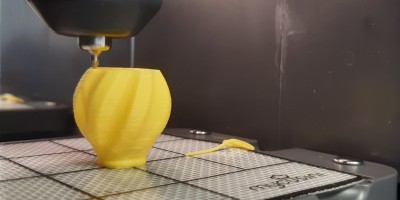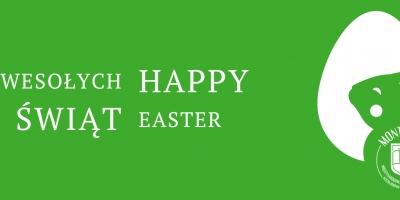Positive Discipline in the classroom.
This interactive workshop is designed for teachers, counselors, school staff and administrators who want an effective discipline approach that integrates social and emotional learning while reducing challenging student behaviors.
It will take place at August 15, 8 am - 4 pm.
Course delivered in English.
Attendees will learn to:
- Develop a large teaching toolbox of kind and firm discipline approaches.
- Establish explicit classroom structures and procedures.
- Create an equitable classroom community based on mutual respect.
- Understand the motivation behind students' misbehavior and how to encourage positive change.
- Facilitate effective class meetings teaching social skills and problem-solving.
- Learn Positive Discipline/Adlerian Psychology for use in the classroom and school community.
What is Positive Discipline?
Positive Discipline is a program designed to teach young people to become responsible, respectful and resourceful members of their communities. Based on the best selling Positive Discipline books by Dr. Jane Nelsen, Lynn Lott, Cheryl Erwin and others, it teaches important social and life skills in a manner that is deeply respectful and encouraging for both children and adults (including parents, teachers, childcare providers, youth workers, and others).
Recent research tells us that children are “hardwired” from birth to connect with others, and that children who feel a sense of connection to their community, family, and school are less likely to misbehave. To be successful, contributing members of their community, children must learn necessary social and life skills. Positive Discipline is based on the understanding that discipline must be taught and that discipline also teaches.
Five criteria for Positive Discipline
- Helps children feel a sense of connection. (Belonging and significance)
- Is mutually respectful and encouraging. (Kind and firm at the same time.)
- Is effective long - term. (Considers what the child is thinking, feeling, learning, and deciding about himself and his world – and what to do in the future to survive or to thrive.)
- Teaches important social and life skills. (Respect, concern for others, problem solving, and cooperation as well as the skills to contribute to the home, school or larger community.)
- Invites children to discover how capable they are. (Encourages the constructive use of personal power and autonomy.)
Positive Discipline tools
The Positive Discipline Parenting and Classroom Management models are aimed at developing mutually respectful relationships. Positive Discipline teaches adults to employ kindness and firmness at the same time, and is neither punitive nor permissive. The tools and concepts of Positive Discipline include:
- Mutual respect. Adults model firmness by respecting themselves and the needs of the situation, and kindness by respecting the needs of the child.
- Identifying the belief behind the behavior. Effective discipline recognizes the reasons kids do what they do and works to change those beliefs, rather than merely attempting to change behavior.
- Effective communication and problem solving skills.
- Discipline that teaches (and is neither permissive nor punitive).
- Focusing on solutions instead of punishment.
- Encouragement (instead of praise). Encouragement notices effort and improvement, not just success, and builds long-term self-esteem and empowerment.
Unique Characteristics of the Positive Discipline Model also include:
- Teaching adults and students through experiential activities. Creating opportunity to practice new skills and to have fun learning by doing.
- Classroom discipline programs and parent education programs that are consistent. Parents, teachers, and childcare providers can work together to provide a secure, consistent environment for children.
- Inexpensive training and ongoing support so members of communities can teach each other Positive Discipline skills.
- Certified trainers across the country who can work with schools and communities.
A history of Positive Discipline
The Positive Discipline Parenting and Classroom Management Model is based on the work of Alfred Adler and Rudolf Dreikurs. Dr. Adler first introduced the idea of parenting education to United States audiences in the 1920s. He advocated treating children respectfully, but also argued that spoiling and pampering children was not encouraging to them and resulted in social and behavioral problems. The classroom techniques, which were initially introduced in Vienna in the early 1920s, were brought to the United States by Dr. Dreikurs in the late 1930s. Dreikurs and Adler refer to the kind and firm approach to teaching and parenting as “democratic.”
In the 1980s, Lynn Lott and Jane Nelsen attended a workshop facilitated by John Taylor. Lynn began training interns to teach experientially and wrote (with the help of her interns) the first Teaching Parenting Manual. Jane was the director of Project ACCEPT (Adlerian Counseling Concepts for Encouraging Parents and Teachers), a federally funded project that had received exemplary status while in its developmental phase. Jane wrote and self-published the book, Positive Discipline, in 1981. It was published by Ballantine in 1987. In 1988, Jane and Lynn decided to collaborate on the book which is now titled, Positive Discipline for Teenagers, and began to teach parenting and classroom management skills experientially. Lynn and Jane also wrote Positive Discipline in the Classroom and developed a manual filled with experiential activities for teachers and their students.
In the years since, the Positive Discipline series has grown to include titles that address different age groups, family settings, and special situations. Positive Discipline is taught to schools, parents, and parent educators by Certified Positive Discipline Trainers. Community members, parents, and teachers are encouraged to become trained facilitators and to share the concepts of Positive Discipline with their own groups.
Positive Discipline parent education classes are taught across the country, and Positive Discipline is successfully used as the classroom management model in private, religious, and public elementary schools. A demonstration school program was developed and is steadily expanding.
The evidence for Positive Discipline
Formal evaluation comparing Positive Discipline Schools with schools using other discipline programs is just beginning. However, studies of implementation of Positive Discipline techniques have shown that Positive Discipline tools do produce significant results.
A study of school-wide implementation of classroom meetings in a lower-income Sacramento elementary school over a four-year period showed that suspensions decreased (from 64 annually to 4 annually), vandalism decreased (from 24 episodes to 2) and teachers reported improvement in classroom atmosphere, behavior, attitudes and academic performance. (Platt, 1979)
A study of parent and teacher education programs directed at parents and teachers of students with “maladaptive” behavior that implemented Positive Discipline tools showed a statistically significant improvement in the behavior of students in the program schools when compared to control schools. (Nelsen, 1979)
Smaller studies examining the impacts of specific Positive Discipline tools have also shown positive results. (Browning, 2000; Potter, 1999; Esquivel)
Studies have repeatedly demonstrated that a student’s perception of being part of the school community (being “connected” to school) decreases the incidence of socially risky behavior (such as emotional distress and suicidal thoughts / attempts, cigarette, alcohol and marijuana use; violent behavior) and increases academic performance. (Resnick et al, 1997; Battistich, 1999; Goodenow, 1993)
There is also significant evidence that teaching younger students social skills has a protective effect that lasts into adolescence. Students that have been taught social skills are more likely to succeed in school and less likely to engage in problem behaviors. (Kellam et al, 1998; Battistich, 1999) Although specific studies of the Positive Discipline parenting program are in the early stages, programs similar to Positive Discipline have been studied and shown to be effective in changing parent behavior. In a study of Adlerian parent education classes for parents of teens, Stanley (1978) found that parents did more problem solving with their teens and were less autocratic in decision making.
Positive Discipline teaches parents the skills to be both kind and firm at the same time. Numerous studies show that teens who perceive their parents as both kind (responsive) and firm (demanding) are at lower risk for smoking, use of marijuana, use of alcohol, or being violent, and have a later onset of sexual activity. (Aquilino, 2001; Baumrind, 1991; Jackson et al, 1998; Simons, Morton et al, 2001)
Other studies have correlated the teen’s perception of parenting style (kind and firm versus autocratic or permissive) with improved academic performance. (Cohen, 1997; Deslandes, 1997; Dornbusch et al, 1987; Lam, 1997).
What's new at the Academy?
 26.04.2024
Earth Day
26.04.2024
Earth Day
Earth Day at Montessori Academy is, as every year, an opportunity for many different activities. The earth is our home, so it is very important to...
 12.04.2024
3D chocolate printer
12.04.2024
3D chocolate printer
Is confectioner-computer scientist an abstract profession of the future? No, 3D printers are already being used today for personalizing and...
 28.03.2024
Happy Easter
28.03.2024
Happy Easter
Happy Easter wishes The Board, staff and students of the International Montessori Academy.


